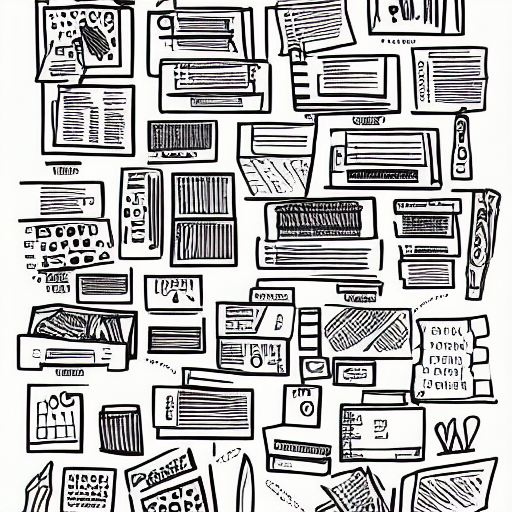Keep a to-do list
A to-do list helps you prioritize tasks. When you have a to-do list, you will have a visual reminder of things you need to get done. It is best to limit the number of items on your list. Some people limit the number to three or seven items. The idea is to prioritize the most important tasks first.
A to-do list is also useful in keeping track of deadlines. Having a deadline for each task makes them easier to complete. Also, having a list to follow will prevent you from getting overwhelmed and procrastinating. You can use different formats for your list, including Google Calendar reminders, spreadsheets, and Microsoft To-Do List.
One way to keep a list is to grade them. You can grade them from A (important) to F (unimportant) and then complete those that are higher on the list first. Another good method is to use a software program for list management. These apps allow you to access your list from anywhere and synchronize it with your mobile phone.
Another useful tip for keeping a to-do list is to prioritize your tasks. While you might have dozens of tasks, you should choose the ones that are most important. This way, you’ll be more effective and less stressed in your job. And you’ll be able to do more important tasks without having to worry about what you’ve forgotten to do.
A to-do list helps you stay organized at work by guiding you throughout your day. It’s helpful to look at it often, especially each morning, at lunch, and at the end of the day or week. It also helps you better plan your time.
Prioritize your tasks
Identifying your priorities is an important part of staying organized at work. You can use various strategies to help prioritize your tasks. A few of them include the Pareto Principle (80/20 rule) and Eisenhower Matrix (four-quadrant box). The Pareto Principle states that 80 percent of your results come from 20 percent of your work.
One of the best strategies is to write down your tasks. This will help you manage your time more effectively, meet deadlines, and complete more tasks in less time. It’s important to write down all of your tasks and rank them according to importance and urgency. The most urgent tasks need immediate attention while the less urgent ones do not.
Another effective strategy is to use the deferred task method. Deferred tasks are those that take more than two minutes. Delegating is another effective strategy to reduce your task list. Using a master list that includes completed and deferred tasks will make it easier to manage your work time and avoid burnout.
A second effective strategy is to designate certain times to complete your work. For example, if you need to focus on a project, set a certain time to complete it. You may get interruptions from co-workers who want to discuss something that does not need urgent attention. It’s okay to answer emails or talk to coworkers later, but set aside some time to complete your work without interruption.
Once you’ve determined which tasks are more urgent than others, you can use the time to focus on the more pressing ones. A master list can help you prioritize your tasks and make the next day more manageable.
Organize your workspace
It’s hard to stay organized at work if you have a cluttered workspace. The most effective way to stay organized is to designate specific places for things and items. This way, you won’t have to spend time searching for things. It will also reduce frustration.
Having a well-organized workspace also makes it easier to work more efficiently. It reduces the amount of time you spend on work-related activities. Research shows that we spend roughly 60% of our day dealing with work-related tasks, compared to only 40% of our day spent doing strategic and skilled work. Being able to quickly find the things we need will make your work flow smoothly. Although the initial organization process may seem daunting, it can also be done in small steps, so you don’t feel overwhelmed.
The way you organize your workspace has a significant impact on your productivity. A messy workspace can rob you of time and energy, which is important when you want to get the most done in the least amount of time. Moreover, a well-organized workspace allows you to focus on just one task at a time.
An organized workspace is a peaceful, relaxing place to work. It reduces stress and gives you a sense of control. Being well-organized makes it easier to find your stuff and do your job efficiently. It also gives you a clear mind. If your workstation is disorganized, you’ll waste time looking for the right file. Furthermore, a clean desk makes you appear more professional and capable to higher-ups.
Keeping your workspace clean and clutter-free is essential for staying organized at work. Cluttered workspaces are distracting, which takes time away from work and increases stress levels.
Organize your time
Organizing your time at work can help you complete more projects in a shorter period of time. Research has shown that 89% of employees waste time at work, and more than half of these employees waste between thirty minutes and an hour each day. A cluttered desk can also hinder productivity. You will struggle to focus and make decisions if your desk is a mess. Your desk reflects your state of mind, so if you want to maximize your productivity, you need to organize your desk.
In addition to planning, it’s a good idea to schedule breaks. People often schedule work in an unorganized manner, but they only need to spend a few minutes at a time. By making breaks a part of your daily routine, you can free up time for other activities and projects.
You can also organize your time by creating lists. Writing lists of things you need to do is a great way to stay on top of tasks and keep track of people and emails. This will also help you to keep track of the time that you spend on each task. You can create multiple lists, and label them according to task, urgency, or importance.
Make a schedule
Keeping your schedule organized is a must if you want to get the most done at work. A schedule lists all the dates, times, and locations for tasks. Calendars, date books, flight boards, and itineraries are common ways people keep schedules. These schedules can be personal or company-wide.
To make a schedule, you first need to have a list of tasks you want to get done during a day. Next, you can create blocks of time on a calendar for those tasks. This way, you will know what you want to do at what time and how long it will take. Then you can make sure you don’t do anything else during those times.
One of the main benefits of making a schedule is that it prevents you from missing important deadlines. You can even color-code your work schedule so that you can easily glance at it. Once you’ve made a schedule, you can claim those blocks of time as your own to work uninterrupted.
Another way to stay organized at work is to create a to-do list every day. It’s useful to list each task in descending order. You can also include segments of longer projects in your to-do list. Also, list all due dates and meeting times. This way, you’ll feel more efficient and productive.












